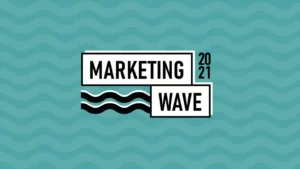
By
Bernardo Gonçalves
Senior Consultant
“Homo Sapiens is a storytelling animal that thinks in stories rather than in numbers or graphs” – Yuval Harari.
Despite the fact that as a business student I tend to sporadically think in numbers, even they seem to be a tool to tell a story. In fact, since the dawn of human time, humans came up with original ways to entertain themselves (a few were even barbarian) and to expose stories – one of the methods which generated a huge impact in modern society was: cinema.
The film industry arose during the first quarter of the 20th century and the infamous “Golden Age of Hollywood” was a reality to be depicted in future movies. With this sudden surgency, the necessity of promoting films and understanding the market gave birth to the merger between marketing and this industry. The earliest methods of marketing movies were the distribution of flyers (completely outdated in modern times) and advertisements in TV and Radio. Although marketing channels were more limited than the ones we have today, there were some innovative and successful marketing campaigns worth noticing:
- During the 50’s, the director William Castle redefined the cinema experience by frequently incorporating a weird gimmick into the theatre experience. From hoisted prop skeletons floating above the audience’s heads to installing electric buzzers into theatre seats to creating a shiver run up their spine. By the way, Netflix’s interactive movie, “Bandersnatch” was taken as a revolutionary innovation a few years ago but you know what? Castle did it by creating a poll that allowed moviegoers to choose the ending of the movie (actually the “happy” ending was never shown – maybe the poll was fixed, or people just love “sad” endings).
- Around the same time, in 1960, the master Alfred Hitchcock was premiering one of his masterpieces – “Psycho”. Hitchcock was not only the master of suspense, but he was also a marketing innovator. In this situation, he issued explicit policies to movie theatres forbidding anyone from entering the room once the film started (at that time it was common for viewers to enter a movie mid-way, watch until the end and then watch the rest on the following session). This policy enforcement generated huge lines which were not common event at the time making people intrigued by the movie and the director’s attitude.
As technology progressed so did the emphasis of marketing in the industry. More developed movie posters, trailers, and advertisements were being used to attract larger audiences. When the Internet became a reality, a whole new channel with unlimited reach was available for marketeers to market their movies in a global scale. In fact, one of the best movie marketing campaigns ever was a consequence of this:
- The year was 1999, “Blair Witch Project” was a classic “found-footage” horror flick created with a budget of only $60.000 and three unknown actors. With such financial constraints, producers had to be creative on the promotion of their movie. Fake “missing person” posters for the cast were issued and questions regarding their whereabouts were asked to film festival attendees. Additionally, the producers leveraged the power of this new thing called internet with a genius move (even though it is pretty standard for low-budget horror movies nowadays) – fake newsreel and police reports were posted on the website making everyone question if it was a documentary instead of a horror film. Enough people had the internet to spread the word, but not enough people had it to check if it was real or not. The website reached 160 million hits and the film was screened in American colleges to further generate word-of-mouth.
Since then, movies have been promoted in the most diverse ways possible: movie posters became interactive, mobile apps were developed, videogames were created, and many more. Movie budgets rose to stellar numbers and marketing represents an increasingly bigger slice of it every year.
Influence of Market Research
It is impossible to discuss movie marketing without mentioning market research. Although it has been used in the industry for a long time, ever since the further development of AI and automation it has experienced a tremendous boost. Putting it in very simple terms, these technologies are currently used to identify what kind of movie genres moviegoers want to see on screen and most importantly what they might buy. This is crucial for Hollywood’s franchise culture – Star Wars, MCU, DCEU, any many more only exist because of conclusions on what consumers might enjoy drawn through market research. The most caricatural example of market research drove to an extreme is the case of “Suicide Squad”: after releasing the trailer for this movie, Warner Bros decided to completely re-edit it because of the trailer’s positive feedback – making it look more like the trailer. It is obvious that the movie industry is a business and companies want to make as much profit as possible and market research had a tremendous positive impact such as increasing screen-time for minorities as well as more diversity behind the screen. However, discussions between cinephiles pose very interesting arguments regarding the limitation of creativity and the creation of movies that are not “cinema” – as Martin Scorsese polemically stated in 2019 – but rather puppets manipulated by studios that instead of making choices based on creativity, make them based on market research (cast choices, character development choices, etc.)
Food for thought: since Blockbuster franchises continue to be the ones with highest box office results, will we have an industry based on what viewers supposedly want? Most people are not aware of what they want to watch until they watch it, or they are not honest when asked. So, is this the right path for the industry to take?
Note: there are more exquisite and fabulous movies being produced during this modern era than ever, but unfortunately, they are not as “popular”. I will gladly further discuss the theme of this article as well as share some movie recommendations!
BIBLIOGRAPHY
- Quora. (2014, February 11). How Has Movie Marketing And Distribution Evolved Over Time? Forbes. https://www.forbes.com/sites/quora/2014/02/11/how-has-movie-marketing-and-distribution-evolved-over-time/?sh=42fe88411f62.
Keleher, J., & Keleher, J. (2018, November 13). 7 memorable movie marketing campaigns worth stealing from. Brafton. https://www.brafton.com/blog/content-marketing/7-memorable-movie-marketing-campaigns-worth-stealing-from/.
Joseph, S. (2017, June 22). Movie marketing moves into the digital age. Marketing Week. https://www.marketingweek.com/movie-marketing-moves-into-the-digital-age/.
YouTube. (2012). How Hitchcock Got People To See “Psycho”. YouTube. https://www.youtube.com/watch?v=DjRzj_Ufiew&t=34s.




